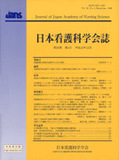Japanese
English
- 販売していません
- Abstract 文献概要
- 参考文献 Reference
要旨
本研究は,NICUから小児病棟に転棟し継続入院する乳児の母親が,転棟後の小児病棟でどのような体験をしているのかを明らかにするために,民族看護学の方法を用いて行った.主要情報提供者であるNICUから小児病棟に転棟し継続入院する乳児の母親7名への参加観察と面接,一般情報提供者(小児病棟看護師・NICU看護師・医師・小児病棟に入院する子どもの母親・主要情報提供者の夫)17名への面接により得られたデータを分析した結果,6つのテーマと1つの大テーマが抽出された.
母親にとって転棟は,「異空間」からの脱出と同時に,子どもが「生かされている存在」から一歩前進し,「生きている自分の子」になることだった.小児病棟では子どもの存在を実感し,安堵感を得ながら,子どもを世話するのは自分だと思うようになっていった.それは,看護師や母親同士の関係を通して確かなものになっていくという,母親になるプロセスでもあった.
以上のことから,NICUから転棟してきた子どもの母親に対して,小児病棟では,①転棟時におけるNICUと小児病棟との連携,②習得速度に合わせたケアの移譲,③ケア習得に関する環境の整備,④母親同士が交流できる場の提供,が重要であることが示唆された.
Abstract
The purpose of this study was to identify experiences of mothers whose babies are continually hospitalized from NICU to the pediatric ward. Ethnonursing was used throughout this study. Seven mothers, whose babies were continually hospitalized from NICU to the pediatric ward, participated in this study as the main informants. Seventeen general informants―nurses, doctors, hospitalized children's mothers, and main informants' husbands―also participated in this study. Data were collected using both participant observation and interviews.As a result,six sub themes and one main theme were identified from the data.
For mothers, their babies' transfer from the NICU to the pediatric ward implied not only escape from “the extraordinary place”but also the fact that their babies could now live on their own rather than being kept alive on support. Following their babies' transfer, mothers could actually feel their babies' life and relief by this. Thereby, the feelings of nurturing and caring began to develop among the mothers. In other words, they were on their way to becoming mothers in the real sense of the term; their feelings were augmented by their relationship with nurses and by being among other mothers.
These findings suggested the importance of caring for mothers whose babies were continually hospitalized from NICU to the pediatric ward. This care can be provided as follows: 1)cooperation between NICU and pediatric ward for the baby's transfer, 2)gradually shifting the role of caregiver from nurse to mother in consideration of the mother's pace of acquiring the requisite care skills, 3)providing a good environment to the mother for acquiring the requisite care skills, and 4)providing adequate space for communication among mothers.
Copyright © 2006, Japan Academy of Nursing Science. All rights reserved.


